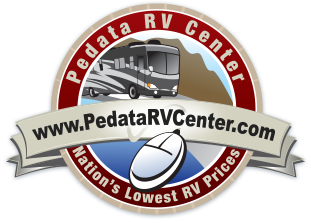Your new home in a used RV can be very happy. You will want to check the rig out thoroughly, including the seals and seams along the roof and the walls under the window. The biggest risk in buying a used RV is water damage. Shop with care and make sure everyone has their own private space in your rig.
Water Management is Key
If you park in RV parks, access to water for cooking and bathing is quite simple. However, if you want to do some dry camping and check out national forests and the desert southwest, you will need to carry the water you need for these activities.
Luckily, there are some easy adjustments you can make to a used RV to allow you to conserve water. You could add a composting toilet to your used RV, which would not only reduce your black tank needs but increase your grey tank space.
When shopping for your RV, purchasing your used rig from a dealership can also give you a lot of information on the best boondocking features. For example, installing a composting toilet can be fairly simple, but you will need to update the bathroom floor to make this work. Working with a repair pro who can help you route fluids through your tanks and seal up the floor effectively can save damage over time.
Power Tips and Tricks
Your used RV probably has a generator to feed the house batteries. While you can probably run the generator without firing up the oven, that would mean trips into town for gas. If you’re planning to boondock, you will probably spend several days in one spot.
Consider talking to your RV sales professional about installing solar panels to your rig to feed your batteries. If you’re not able to mount them to the roof, consider investing in freestanding solar panels with their own jacks. Another option is to invest in soft folding solar panels. These panels are actually lightweight enough that you can hang them from your rig window hardware with grip clips. Once you have the right length of power cable, lightweight solar panels can be managed even with limited lifting power or mobility.
If your RV isn’t set up for solar, you will need a charge controller to protect your house batteries. Make sure you thoroughly check out the condition of your house batteries; over time, they will decay. Consider installing sealed AGM or glass mat batteries instead of wet cell. If it’s in your budget, lithium batteries may be best.
Add-Ons to Make Each Trip Special
There are many simple things that you can add either in your RV or to the outside of the rig. For example, talking to your RV sales professional about adding an awning will keep your rig cool on bright sunny days. Investing in a good rug or ground mat to put under your awning will cut down on the dust in your rig.
If you’re going to spend your winters in the desert, a cordless vacuum will be critical. Treat yourself to some fine no-see-um netting to drape over doorways if you’re going to leave your windows and doors open. It won’t keep all the dust out, but it will help.
Sun Protection
Since you had all the seals checked out before you bought the rig, you will only need to bring the necessary caulking and tape to keep it watertight. Sunlight is hard on rubber, so make sure you also check on and replace as necessary any and all seals on your sliders.
Finally, take care to cover your tires while you’re parked on a boondock. Even new tires will degrade quickly if assaulted by the desert sun every day. A simple fabric windshield cover on the outside will also keep heat from building up in the cab if you’re in a drivable rig.
Getting set up for easy boondocking will also add to your quality of life when you’re hooked up in an RV park. The ability to survive on stored water, to power your rig with sunlight, and to avoid using dump stations will free up your travels for even more adventures!











